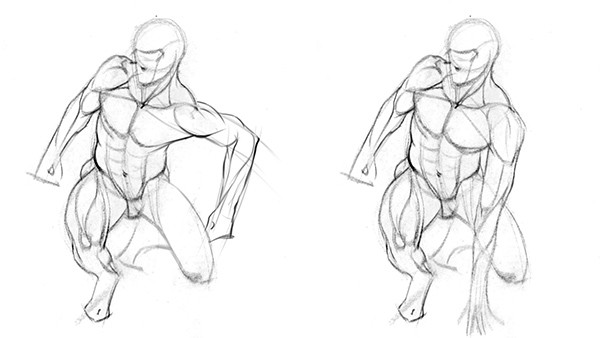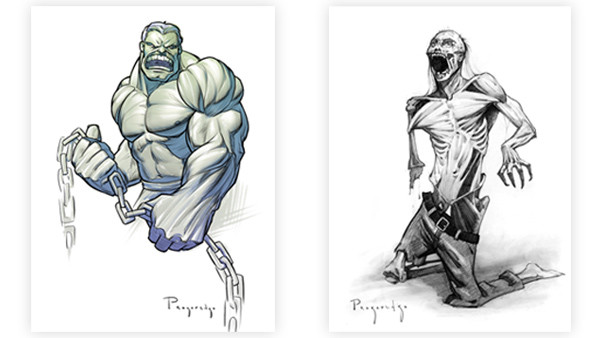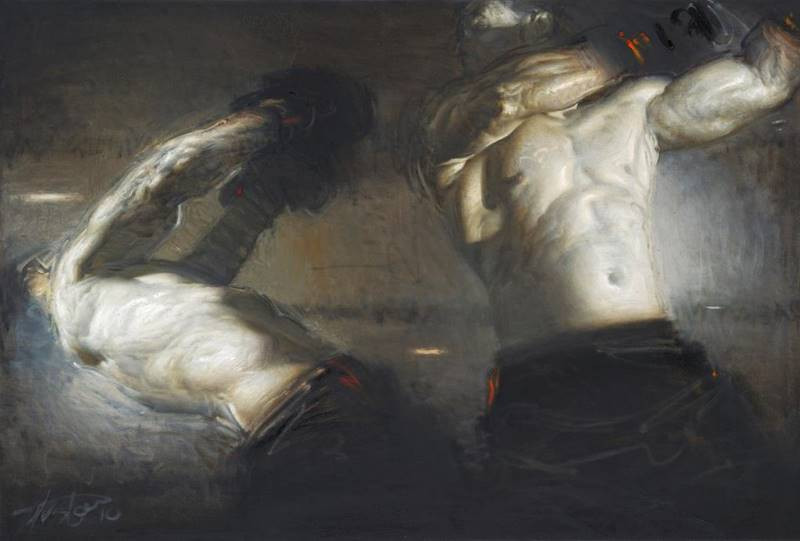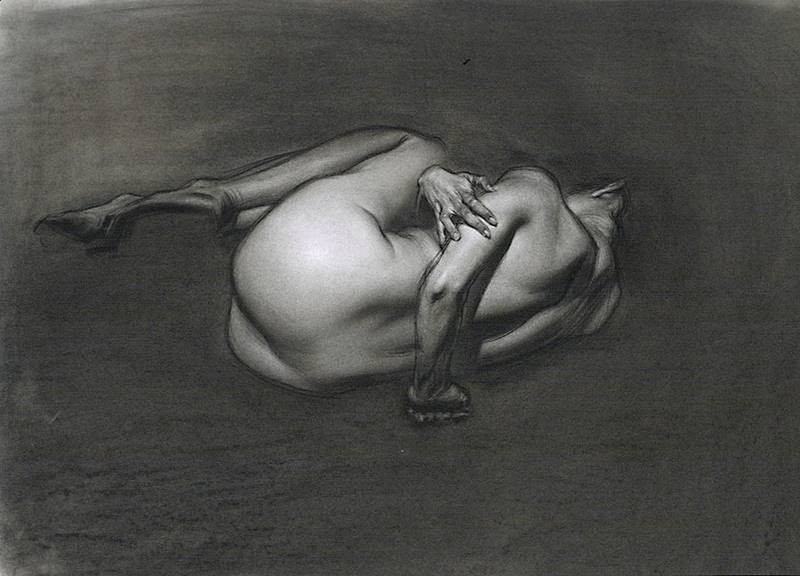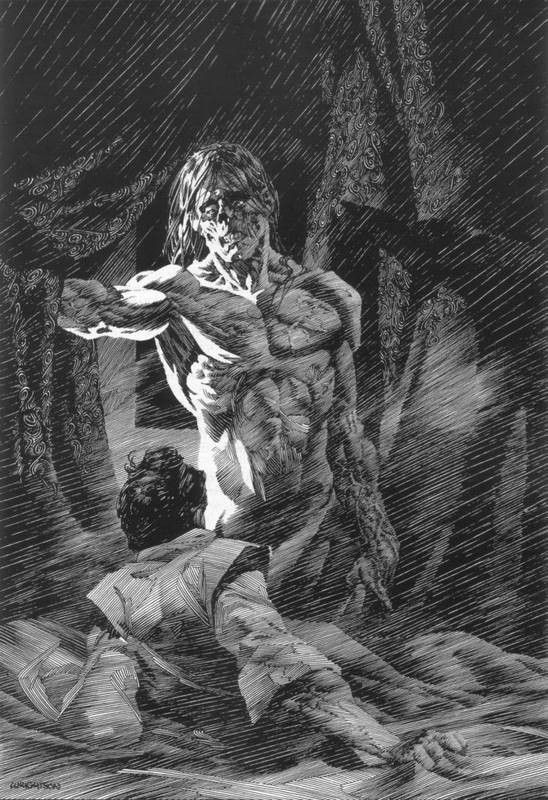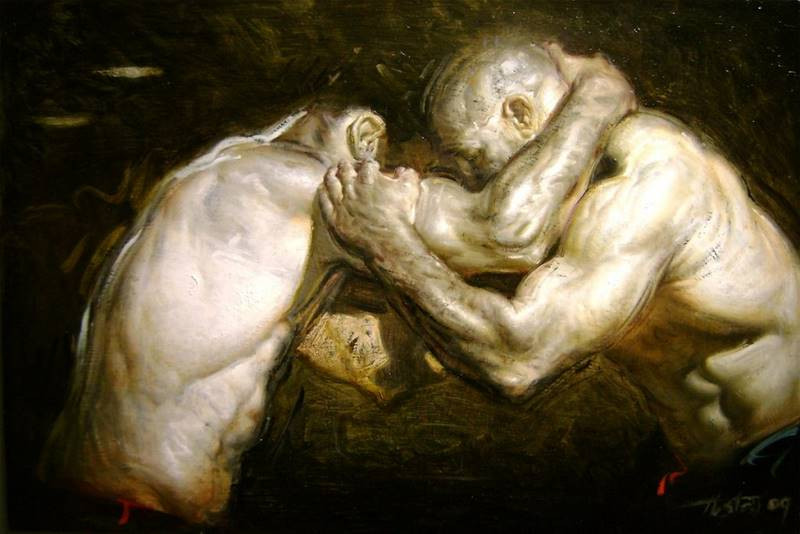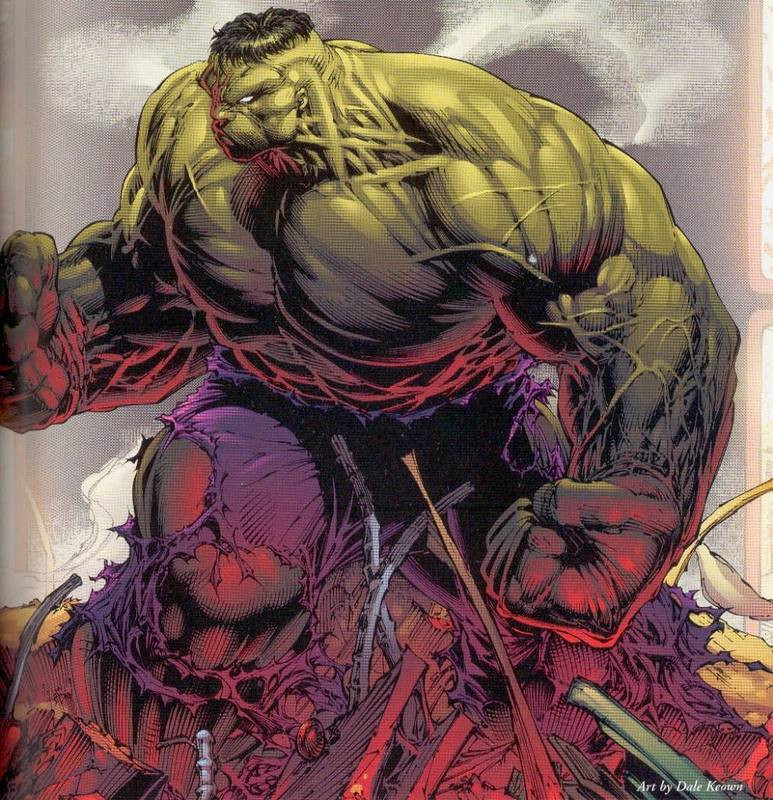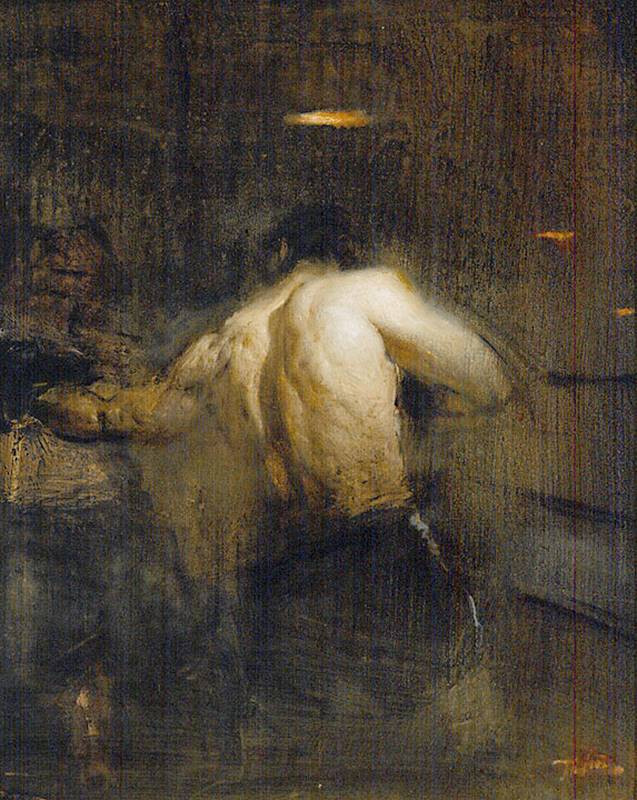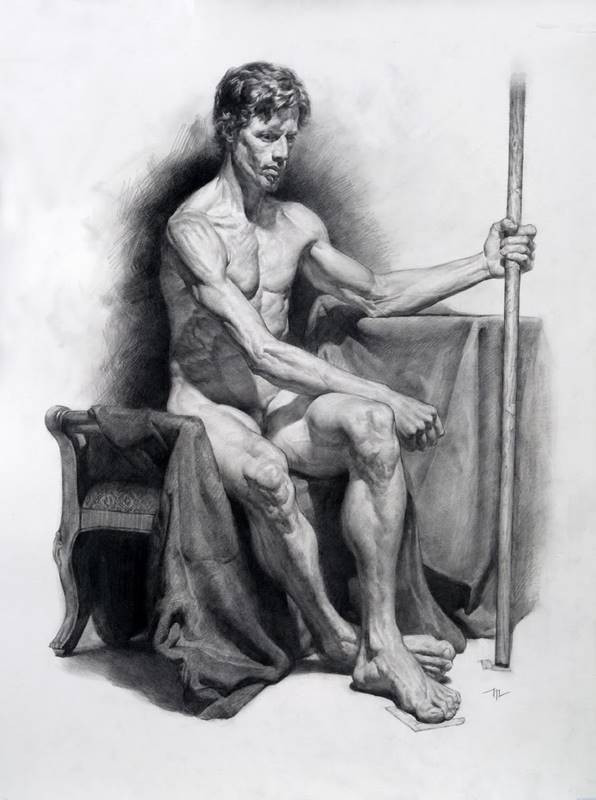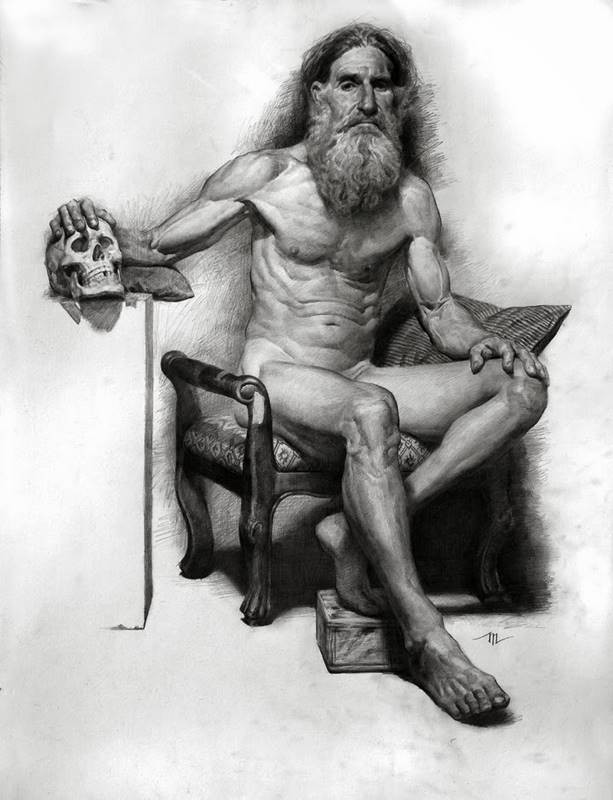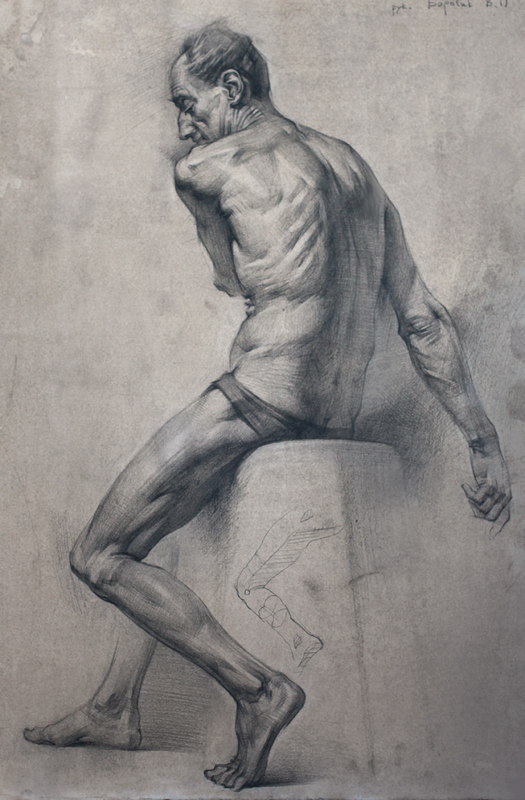Hello there, My name is Stan Prokopenko. I'll be your instructor for this course on Anatomy of the Human Body for Artists. In this video I'm gonna give you an overview of the course. Why we study anatomy, what you'll learn from this course, and what's in the premium version of the course.
First, let's examine why we should study anatomy...
Why?
There should be no part of the body that is a mystery to you. If it's a mystery, then you won't be able to draw it accurately without copying it or just making up stuff that doesn't exist. With knowledge, you can design the body to make changes. You can decide what to exaggerate, what to eliminate, or what to add that's not noticeable in the reference. When you're able to change your reference you are no longer a slave to the reference. You can call on it when you need to. You can ask it for inspiration. And you can create your own unique work of art that stays true to your vision and the story you're trying to tell. When an arm is up in your photo, but you need it to be down to create a better composition, you can do that. When a leg of some figure is too busy with information, you can relax it and show just the major forms. You can show more structure in a figure that you want to feel more solid and heavy.
You can create characters that don't exist in reality. You're not going to find a model that looks like the Hulk or a zombie. That has to be invented. With a high level of understanding and some creativity you have the power to create whatever characters you want.
And speaking of creativity, fluency allows you to be more creative. You can tap into your vast knowledge base for ideas, to combine pieces of information in a new way. A fluent artist works quicker, creating a more natural, fluid creative process.
But knowledge of anatomy doesn't only give you the ability to change reference or draw from imagination. It also helps to draw the body to feel natural. To be believable and to feel alive. You can pick up on the subtleties that an untrained eye would miss. You understand what makes the body look the way it looks, so you know how to draw it to look that way.
If you have to rely on copying, you will misinterpret a lot of things. And you might not see a lot of things that are actually important. If you don't know WHAT you're looking for, you probably won't find it...
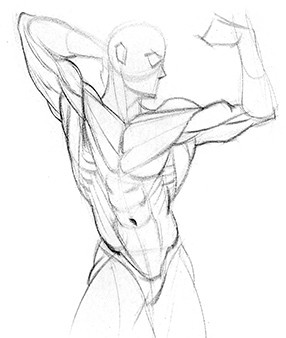
Why study the skeleton, why not just surface forms?
You'll notice in this course that I'll often go deep into the body, all the way down to the bones. Many newer students will wonder, why are we studying the bones? I just want to draw the muscles. The forms of the skeleton are very important because they're the foundation of the body. The bony landmarks help us track the muscles, as I showed in the Figure Drawing Course, and will show a lot more in this course. The muscle are attached to the skeleton, so if you know the skeleton and where the muscles attach to the skeleton, the muscles become much easier to draw, paint and sculpt.
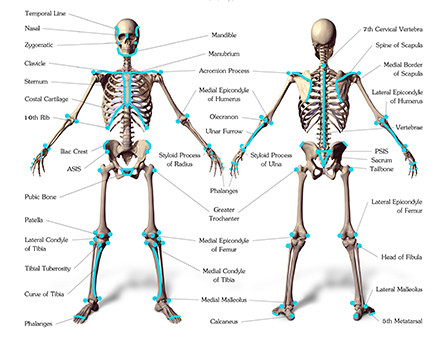
The skeleton is also very consistent from person to person. Muscles and body fat composition can vary a lot between two body types, but we can rely on the skeleton to inform us of what we're seeing. A bodybuilder and a couch potato could have the same size skeleton. So, the landmarks will be in the same spots, just filled in with very different stuff.
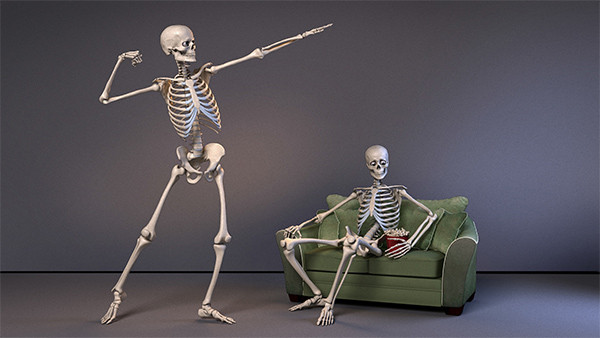
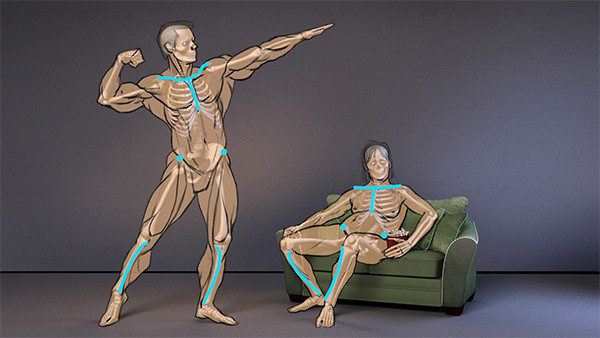
Also, understanding the joints means you understand the [motion of each joint]. And it will help you figure out how this motion affects the surface forms.
Please, don't skip the lessons on bones. You'll just be left with a pile of meat.
What?
As the title implies, this course is intended for artists. It's not meant to be a medical reference. We will be hyper focusing on the parts of anatomy that an artist will need to know and ignoring the parts we don't need to know. The deep muscles that don't affect the surface forms are of little interest to draftsmen, painters, sculptors or animators. Unless you're drawing a zombie... then maybe...
2d diagram vs 3d forms
The body is constructed from many types of forms. Bones, tendons, ligaments, muscles, fat. These forms overlap, insert under and wrap around each other. The human body is a very complex system of layers.
And the volumes at the surface are also very complex. It's not enough to just study the front, back and side views you typically see in anatomy books. Look at this group of simple forms. From this angle it looks like this, and from another angle it looks like this. The way these forms overlap each other appears very different, from different angles. To accurately draw the forms from any angle, you need to truly understand the forms and their relationship. You can't just memorize the 2d contours.
The body is the same way. The muscles overlap each other in ways that when viewed from different angles, look very different. So, learning the 2-dimensional diagrams of the body is not good enough. You need to have a 3-dimensional understanding of anatomy. In this course, I'll try to give you that - a complete picture of the human body. We' ll look at the 2d diagrams, and then study the 3d forms of the muscles.
We'll also look at the tracking from origin to insertion, layering of muscles, fat, and other tissues and most importantly how the muscles look when the body moves to various positions. * It's great if you know the shape in the anatomical pose, but what does it look like when its flexed or stretched. And finally, how does it all look like on the surface when you add skin over it.

Course Structure
Those of you who already visited the sales page, probably noticed that this course is split into 3 parts - Torso, arms and legs. Each section is going to be a thorough investigation of that portion of the body.
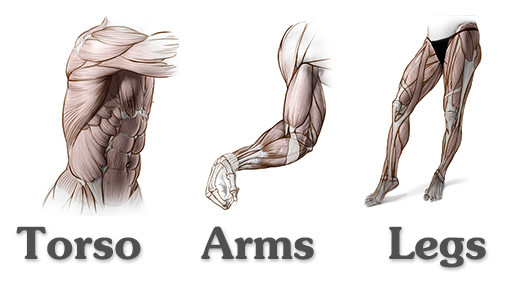
3D Model
Each bone and muscle group we learn will be available as a 3D model for you to use right in your browser. After each lesson you can open up the 3d model and study it further. Being able to spin it around and look at the muscles from any angle is helpful in truly understanding the 3d forms.
Information Covered
I'll teach you everything from the details of the deep muscles to the simplified blocky forms common to George Bridgman. How the layering of muscles looks like on the surface of a real person. Cross sections to help you visualize the layering of the muscles. I'll present variations of body types. Idealization, articulation and how movements changes muscle shapes, range of motion, function of the body as a machine and I'll show you how to actually draw the stuff.
Assignments and Homework
Ya that's right! There will be homework. A variety of exercises to help you learn the information. You can't learn anatomy just by listening to me talking about it. It's important to actually use the information while you are drawing. Put in the effort by doing the assignments for each lesson. Practice what you've learned rather than binge watching all the lessons. The assignments are enjoyable anyway. So, if you like drawing and you like learning, this should be a very rewarding course.
What you're working for
I've mentioned that studying anatomy is a long and difficult process. But, it's so rewarding! All that sweat and frustration is worth it. Just look at some of the artwork that's done by artists that put in the time to master human anatomy! I find these incredibly inspiring. As you come across artists like these, save them in a folder and use them as idols of what you're working for.
What's in Premium?
As many of you know by now, I like to give away a lot of free lessons. It allows everyone to learn something, not just the people that can afford the full course. Every lesson in this Anatomy course will have free content and for those that want to continue learning, more in-depth lessons will be available by purchasing the full course.
First, you'll get extended lessons. So, the videos will be longer, covering more information about each muscle and including more of the deeper muscles. You'll get to see more examples and drawing demonstrations. Cheat sheets and assignment 'answer' videos. What I mean by answer videos is. For each lesson I'll be giving out assignments. In the premium course, I will actually show you how to do the assignment so that you can check your work. Another really big premium feature, as I've already mentioned, is the 3d models right in your browser. These will help you study the anatomy further and it's a great aid for the assignments.




















